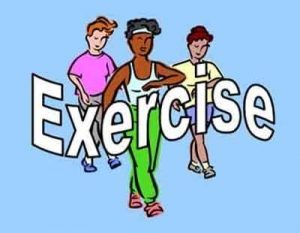- Home
- Editorial
- News
- Practice Guidelines
- Anesthesiology Guidelines
- Cancer Guidelines
- Cardiac Sciences Guidelines
- Critical Care Guidelines
- Dentistry Guidelines
- Dermatology Guidelines
- Diabetes and Endo Guidelines
- Diagnostics Guidelines
- ENT Guidelines
- Featured Practice Guidelines
- Gastroenterology Guidelines
- Geriatrics Guidelines
- Medicine Guidelines
- Nephrology Guidelines
- Neurosciences Guidelines
- Obs and Gynae Guidelines
- Ophthalmology Guidelines
- Orthopaedics Guidelines
- Paediatrics Guidelines
- Psychiatry Guidelines
- Pulmonology Guidelines
- Radiology Guidelines
- Surgery Guidelines
- Urology Guidelines
Weekly exercise of half an hour protects against subarachnoid hemorrhage

Finnish researchers have found that even half an hour of light exercise per week protects against subarachnoid hemorrhage.The study has been published in the distinguished Scientific Reports journal.
Exercise is beneficial in number of cardiac, pulmonary and psychiatric disorders but it's benefit in Subarachnoid hemorrhage was not known.
"Even moderate physical exercise, such as a 30-minute walk or bike ride four days a week reduces the risk of SAH by roughly 20%, regardless of age and gender,” says physician Joni Lindbohm, the principal author of the research article.
Subarachnoid hemorrhage (SAH) refers to extravasation of blood into the subarachnoid space between the pial and arachnoid membranes. It occurs in various clinical contexts, the most common being head trauma.Other causes of nontraumatic or spontaneous hemorrhage include a ruptured cerebral aneurysm or arteriovenousmalfo
In a Finnish follow-up , the effects of exercise on Sub Arachnoid Hemorrhage risk were investigated in a cohort of roughly 70,000 Finns gained from the FINRISK population survey.
The findings indicate that as little as half an hour of light exercise per week reduces the risk of SAH by approximately 5%, with the benefit increasing proportionally to the amount of exercise. This can be achieved, for example, by walking, cycling or, say, skiing to work.
“As such, the finding did not really come as a surprise, as exercise is known to work well in preventing many other cardiovascular diseases. However, the extent and comprehensive nature of the benefit among various groups of people was a positive surprise.”
The study also demonstrated the favourable effect of increased exercise in connection with smoking and high blood pressure, the other SAH risk factors. For smokers in particular, exercise reduces the risk as much as twice the amount applicable to the rest of the population.
“However, what must not be overlooked is the fact that smoking remains the number one risk factor for SAH and that quitting smoking is the principal way of preventing the appearance of the disorder,” Lindbohm notes.
Most SAH haemorrhages are the result of ruptured cerebral aneurysms, causing blood to flow from the largest cerebral arteries into the space between meninges, the membranes surrounding the brain, which increases intracranial pressure and reduces cerebral circulation.
“Even with no accurate scientific evidence of the biological mechanism of action produced by exercise in terms of SAH, the reduced risk is most likely connected with a reduction in a systemic inflammatory state, which also affects the walls of cerebral arteries,” neurosurgeon Miikka Korja explains.
Next Story
NO DATA FOUND

Disclaimer: This site is primarily intended for healthcare professionals. Any content/information on this website does not replace the advice of medical and/or health professionals and should not be construed as medical/diagnostic advice/endorsement or prescription. Use of this site is subject to our terms of use, privacy policy, advertisement policy. © 2020 Minerva Medical Treatment Pvt Ltd